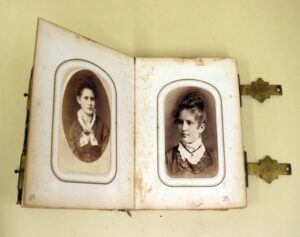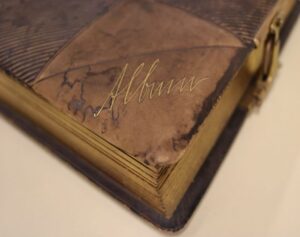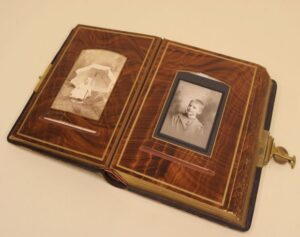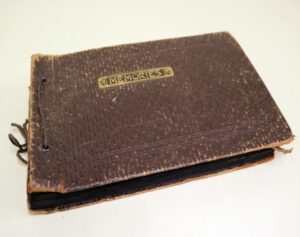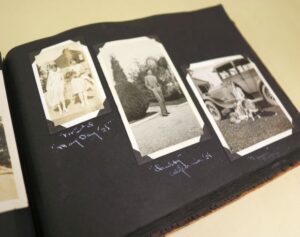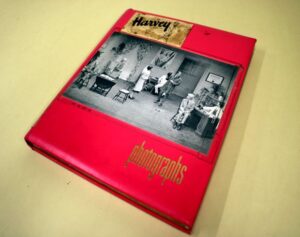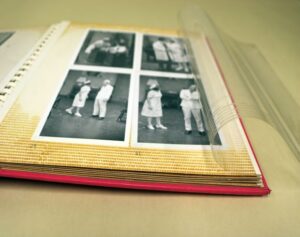All About Albums | Save Your Photos Month
This entry is a part of a series celebrating of September’s Save Your Photos Month. Stay tuned for more!
As photography began to take off as an industry in the 1860s, people began to accumulate collections of images of families and friends. The photograph album was introduced as a way to store and present them. Albums were often organized as gifts, to document a specific event, or just a way to remember family.
Early Versions
The first commercial photo albums arrived in the 1860s and were designed to hold carte de visites and tintypes. Usually small, bound in covers made of tooled leather over wood, the albums often included a front listing page for identifying images. Each page was designed to hold two images, back to back, in a paper sleeve.
When cabinet cards were introduced in the 1870s, albums expanded in size and became more decorative. Covers came in leather, suede, or velvet and trimmed with ornate metal script or clasps. Pages now held multiple images.
Personal Touch
When photography became a personal endeavor in the early 1900s, so too did creating photograph albums. The next incarnation of the photograph album was constructed of loose leaves of black paper, bound with thinner covers. Snapshots could be glued directly to the page or affixed with adhesive mounting corners. Photos could be arranged in any fashion and pages now allowed for writing details about images.
Stuck On You
Magnetic photo albums debuted in the 1960s, though calling them magnetic is somewhat of a misnomer. These albums are made of pages covered with an adhesive to keep photos in place. While this seems like a good idea, the adhesive had various negative effects. The glue either dried out and photos became loose, or photos stuck permanently. Neither was particularly beneficial to photographs.
Preservation Tips & Tricks
Context is everything when preserving old photo albums. The order in which an album was put together meant something to the creator and may give you clues about the photographs if they’re not identified. If at all possible, keep old albums in their original order. It’s okay to remove loose photos, but make a note of where they came from.
The older Victorian albums – for carte de visites, tintypes, and cabinet cards – usually withstand the ravages of time. The leather or fabric covers may wear, but the pages stay well intact. The black paper albums of the early 20th century are more fragile, while the glue from magnetic albums can damage photographs. And, as with all old photographs, keep albums in a safe, climate controlled environment.
From PhotoBlog

